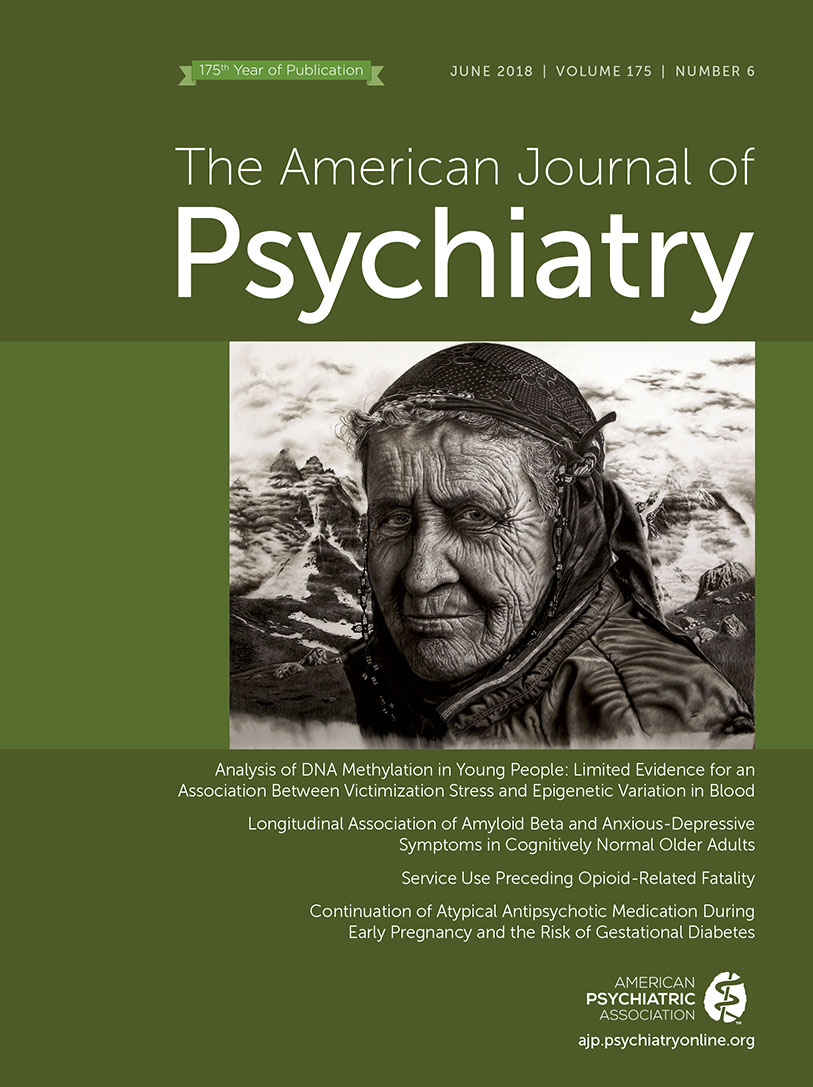The Use of Carbamazepine to Expedite Metabolism of Risperidone Long-Acting Injection Through Induction of CYP3A4 in a Patient With Extrapyramidal Symptoms
To the Editor: Development of prolonged extrapyramidal symptoms presents a significant risk to the use of long-acting injectable (LAI) antipsychotic medications, despite efforts to demonstrate tolerability of oral formulations prior to administration. Standard treatment of extrapyramidal symptoms involves discontinuing potent dopamine-blocking medications (1, 2). However, patients who receive LAI antipsychotics cannot rapidly clear the offending agent. To date, there is little literature on how to expedite metabolism of LAI medications.
Our patient is a 28-year-old man with a history of schizoaffective disorder who presented as a transfer from an outside hospital with dysphagia, dysarthria, and immobility. History suggested that the patient had recently received an LAI antipsychotic medication. There was initial concern for catatonia; however, the patient was unable to tolerate moderate dosages of lorazepam due to sedation. He was subsequently given diphenhydramine with improvement of symptoms, suggesting prolonged extrapyramidal symptoms as the etiology. Laboratory analysis using high-performance liquid chromatography and tandem mass spectrometry indicated previous administration of risperidone by LAI. The patient was started on carbamazepine to induce the enzyme CYP3A4 and expedite metabolism of the LAI. Repeated laboratory tests showed a rapid decline in levels of risperidone and 9-hydroxyrisperidone (Table 1). His prolonged extrapyramidal symptoms improved, and he regained the ability to ambulate without assistance.
| Hospital Day | Risperidone Level (ng/mL) | 9-Hydroxyrisperidone Level (ng/mL) | Total Level of Risperidone and 9-Hydroxyrisperidone (ng/mL) |
|---|---|---|---|
| 3 | 1.4 | 11.0 | 12.4 |
| 8 | None detected | 4.6 | 4.6 |
| 14 | None detected | 1.9 | 1.9 |
TABLE 1. Plasma Level of Risperidone and 9-Hydroxyrisperidone by Hospital Day
Although the primary metabolic pathway of risperidone involves hydroxylation catalyzed predominantly by CYP2D6 rather than CYP3A4, coadministration of carbamazepine with oral risperidone has been shown to decrease the levels of risperidone and 9-hydroxyrisperidone by up to 50% (3–5). In addition, there is evidence that carbamazepine can expedite the clearance of another LAI, haloperidol decanoate (6), and likely accelerates the removal of all LAI medications metabolized partially by CYP3A4. Our case suggests that there may be a role for carbamazepine in treating patients taking LAIs who develop prolonged extrapyramidal symptoms or other syndromes, such as catatonia, exacerbated by dopamine D2 receptor antagonists.
1 : A clinical review of the treatment of catatonia. Front Psychiatry 2014; 5:181Crossref, Medline, Google Scholar
2 : Catatonia: our current understanding of its diagnosis, treatment and pathophysiology. World J Psychiatry 2016; 6:391–398Crossref, Medline, Google Scholar
3 : Metabolism of risperidone to 9-hydroxyrisperidone by human cytochromes P450 2D6 and 3A4. Naunyn Schmiedebergs Arch Pharmacol 1999; 359:147–151Crossref, Medline, Google Scholar
4 : Significant pharmacokinetic interaction between risperidone and carbamazepine: its relationship with CYP2D6 genotypes. Psychopharmacology (Berl) 2002; 162:50–54Crossref, Medline, Google Scholar
5 Janssen Pharmaceuticals: Risperdal Consta (risperidone) Long-Acting Injection: Highlights of Prescribing Information. Titusville, NJ, 2007, revised 2017Google Scholar
6 : Do enzyme inducers modify haloperidol decanoate rate of release? Prog Neuropsychopharmacol Biol Psychiatry 1994; 18:1323–1332Crossref, Medline, Google Scholar



